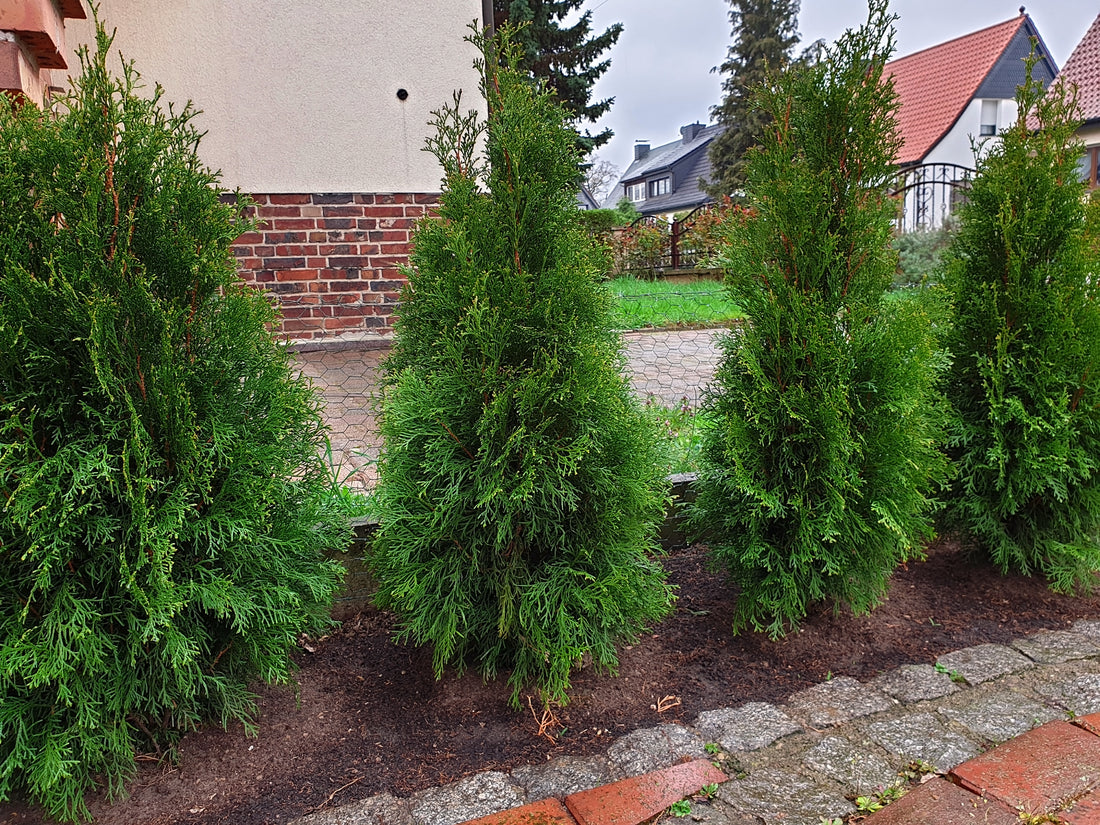I. Introduction
Garden enthusiasts and landscapers alike hold Thuja trees in high regard, recognizing them as one of the cornerstones of many beautifully designed landscapes. These versatile and attractive evergreens provide privacy, offer wind protection, and add substantial aesthetic value to any property. This comprehensive guide will delve into the fascinating world of Thuja trees, exploring different varieties and their respective pros and cons.
II. Understanding Thuja Trees
Thuja, belonging to the cypress family, is a genus of coniferous trees commonly known as arborvitaes, an apt name that translates to 'tree of life'. Originating from North America and East Asia, these trees have a rich history. Native American tribes utilized them for various purposes, from canoe building to medicine. In the modern world, they've found a prominent place in our gardens due to their resilience, fast growth, and beautiful evergreen foliage.
III. Varieties of Thuja Trees
An exceptionally robust and fast-growing variety, the Thuja Green Giant can grow up to 3-5 feet per year, reaching an impressive mature height of 50-60 feet. Its rich green foliage is dense and scale-like, making it a top choice for privacy screens. However, due to its immense size, it requires adequate space to flourish and might not be suitable for smaller landscapes.
B. Thuja Emerald Green
Also known as 'Emerald Arborvitae', this variety is renowned for its stunning emerald-green foliage and compact, pyramidal shape. It grows at a moderate pace and can reach a height of 12-14 feet. A top pick for hedges or foundation plantings, it requires less space compared to Green Giant but prefers well-drained soils to avoid root diseases.
C. Thuja Occidentalis 'Smaragd'
'Smaragd', also known as 'Emerald Green', is a compact variety native to North America. It boasts a narrow, pyramidal shape and lustrous, bright green foliage that endures even through winter. With a mature height of 10-15 feet, 'Smaragd' is excellent for small gardens. However, it's slower-growing than other varieties and requires regular watering during dry spells.
D. Thuja Plicata 'Atrovirens'
'Atrovirens' is a Western Red Cedar variety notable for its dense, columnar shape and dark green, aromatic foliage. It grows swiftly to 40-60 feet and is resistant to deer damage. On the flip side, it's not as cold-hardy as other varieties and requires a lot of space, making it better suited for large landscapes.
E. Other Notable Varieties
Other varieties like Thuja Occidentalis 'Nigra' with its dark green winter foliage, and 'Globosa' known for its round shape and dense foliage, offer unique aesthetics and traits. Each Thuja variety has its own set of advantages and potential challenges, so it's crucial to understand these before making a decision.
Comparing Different Varieties of Thuja Trees
| Thuja Variety | Mature Height | Growth Rate | Foliage Color | Shape | Best Used For |
|---|---|---|---|---|---|
| Green Giant | 50-60 feet | Fast (3-5 feet/year) | Rich Green | Large Pyramid | Privacy Screens, Windbreaks |
| Emerald Green | 12-14 feet | Moderate | Emerald Green | Compact Pyramid | Hedges, Foundation Plantings |
| 'Smaragd' | 10-15 feet | Slow | Bright Green | Narrow Pyramid | Small Gardens, Privacy Hedges |
| 'Atrovirens' | 40-60 feet | Fast | Dark Green | Dense Column | Large Landscapes, Privacy Screens |
| 'Nigra' | 20-30 feet | Moderate | Dark Green (Winter) | Pyramidal | Hedges, Specimen Plantings |
| 'Globosa' | 3-4 feet | Slow | Bright Green | Round | Borders, Rock Gardens |
Key Features of Thuja Varieties:
-
Thuja Green Giant:
- Fastest growth rate among Thuja varieties.
- Perfect for creating quick privacy screens.
- Requires ample space to grow due to large size.
-
Thuja Emerald Green:
- Brilliant emerald-green foliage, hence the name.
- Compact and neat pyramidal shape, ideal for small gardens.
- Resilient but requires well-drained soil to avoid root diseases.
-
Thuja 'Smaragd':
- Slow growth rate allows for easy maintenance.
- Retains lustrous green color through the winter.
- Requires regular watering, especially in dry spells.
-
Thuja 'Atrovirens':
- Excellent resistance to deer and pests.
- Not as cold-hardy as other varieties.
- Dense, columnar shape, perfect for large landscapes.
-
Thuja 'Nigra':
- Unique dark green color in winter.
- Excellent as a specimen or for creating medium-height hedges.
- Prefers moist, well-drained soil for optimal growth.
-
Thuja 'Globosa':
- Distinct round shape adds interest to the landscape.
- Perfect for borders or rock gardens due to small size.
- Bright green foliage provides a vibrant touch to the garden.
IV. Growth and Care for Thuja Trees
Thuja trees are relatively easy to care for. They prefer full sun to partial shade and can tolerate a variety of soil conditions, though well-drained, loamy soil is ideal. Regular watering is essential during the first couple of years, and while established, in periods of drought.
Pruning, while not necessary, can help maintain a specific shape or size, especially for hedges. It's best done in late winter or early spring before new growth emerges. Pest and disease issues are relatively rare, but it's good to watch out for bagworms and leaf blight, which can be managed with appropriate measures.
V. Using Thuja Trees in Landscaping
The benefits of using Thuja trees in landscaping are numerous. They provide year-round interest thanks to their evergreen nature, act as a natural sound buffer, offer wind protection, and enhance privacy.
Their usage in the landscape can be multifaceted. Line them up to form a living wall or privacy screen, use them singly as attractive specimens, or plant them in groups to create windbreaks.
When choosing a Thuja variety, consider factors like available space, desired height, and growth speed, as well as soil conditions and climate zone compatibility.
VI. Conclusion
Thuja trees are, indeed, versatile gems in the world of landscaping. With their unique aesthetics and adaptable characteristics, these 'trees of life' have rightly earned their place in our gardens. Whether you prefer the towering Green Giant or the petite 'Smaragd', the choices are plenty. Remember to consider the pros and cons of each variety to make the best decision for your landscape.

